Cineworld has reported food and drink revenues up 2.2% to £89.3m for the year to 1 January, on a 52 week vs 52 week basis.
The company said retail made up 23.2% of its revenue in 2014, up from 22.9% in 2013.
Net retail spend per person increased by 6.3% in the period to £1.86 (2013: £1.75). The company said this was partly due to film mix but also reflected the expansion of its retail offerings which targeted mid-week customers and family visits to increase the overall spend.
During the year Cineworld opened a further two Starbucks coffee outlets, bringing the total to 13. It said all the outlets have traded in line with expectations and continue to grow their revenues and more openings are scheduled for 2015.
On the prospects for the next year, the company said: “ The film slate for 2015 looks promising and a number of films are expected to be “blockbusters”. Most notable releases include the next Bond film “Spectre”, the new Star Wars title “Star Wars: Episode VII”, “Avengers: Age of Ultron” and “Fifty Shades of Grey”. The final Hunger Games film “The Hunger Games: Mockingjay Part 2” and a further Fast and Furious title “Fast and Furious 7” are also expected perform at least in line with their previous instalments. There is also a strong family film slate which includes “Minions”, “Inside Out” and “Big Hero 6”.”
Box office admissions in the period were down 4%, but an increase in average ticket price of 4% resulted in flat revenues. Box office revenues generated by the UK and Ireland cinema industry as a whole were down 2.7% during the same period.
The company said: “Overall box office performance was affected by the weaker film slate for the year and also impacted by the Football World Cup in the summer. In comparable 52 week periods, in the UK as a whole the top three films in 2014 grossed £100.4m (“The Lego Movie” - £34.3m, “Inbetweeners 2” - £33.4m and “Dawn of the Planet of the Apes” - £32.7m) compared to the top three films in 2013 which grossed £125.1m (“Despicable Me 2” - £47.4m, “Les Miserables” - £40.7m and “Iron Man 3” - £37.0m). The 53rd week benefitted from the release of the final Hobbit film: “The Hobbit: The Battle of the Five Armies”, which grossed £33.5m. The British film “Paddington” was also successful over the Christmas period grossing £28.0m.”
On expansion and improvements, Cineworld said: “Customers choose to attend cinemas largely based on the state of their facilities and their locations. We maintain the quality of our offering by adding new screens, upgrades to seating concepts, expansion of food and drink offerings, and by disposing of older screens. The Group devotes a considerable amount of time assessing new site opportunities and this, along with further acquisitions, is a key part of our future growth strategy. Planning laws, economic environment, and the ability of developers to finance their projects where we may choose to locate our cinemas are some of the factors that may impact the Group’s development and growth initiatives. These characteristics differ by country.
“The Picturehouse circuit provides an additional channel for expansion in the arthouse market under the Picturehouse brand and the existing pipeline of new multiplex cinemas is also increasing.”
The company reported group revenue growth of 52.2% for the year taking into account the consolidation of Cinema City and 1.7% on a pro forma basis.
UK & Ireland revenue grew 1.8% on 52 week v 52 week basis, maintaining market share of 27.1% (2013: 27.0%). EBITDA was up 75.1%
Group EBITDA was up 75.1% to £126.6m (2013: £72.3m) taking into account 10 months of Cinema City and 7.4% on a pro forma basis.
Chief executive Mooky Greidinger: “We are pleased to announce solid results for the year and strong cash generation following the successful combination of Cineworld and Cinema City. The combination has resulted in the creation of the second largest cinema chain in Europe, with 203 sites and 1,875 screens by the end of 2014. As a Group, we have outperformed the market and continued to grow revenues despite a year which saw a decline in global admissions. During the year we have continued to expand our estate by opening four new cinemas (St Neots and Telford in the UK and Ploiesti and Targu Jiu in Romania) adding 29 screens. Our strong performance, solid balance sheet and increased profitability have enabled us to propose a dividend of 13.5p per share which represents growth of 33.7%.
“2015 has the makings of a strong year with great titles to look forward to including the new Bond film “Spectre”, the fourth and final Hunger Games movie “The Hunger Games: Mockingjay Part 2” and the latest Star Wars film “Star Wars: Episode VII”. In the meantime, the current year has started strongly with titles such as “Taken 3” performing well. “Fifty Shades of Grey”, which opened in February 2015, went beyond our expectations and helped us to achieve record levels of weekend admissions for the Group. We are contracted to open a further 10 cinemas in the UK and 10 in CEE & Israel during the year. Of these sites, 19 new sites are currently under construction. Overall, the strength of the film line up in the current year, coupled with our good pipeline of new sites across our international estate, gives us confidence that we are on track with our plans for 2015.”
Douglas Jack, of Numis, said: “We are increasing our 2015E forecast by 4% (PBT from £86.3m to £90.0m; consensus £86.7m), even though stronger Sterling is likely to undermine Cinema City profits by c.£4m. Our 2015E forecasts are based on Box Office and Retail growth assumptions of 6% in the UK and 3% in mainland Europe, as well as expansion increasing the number of screens by 10% (with 10 new cinemas in the UK and 10 in mainland Europe).
“In 2015E, strong growth should be driven by £5m of forecast acquisition synergies (of which £2m has already been achieved), 10% self-financed expansion and attractive LFL admission growth. We are upgrading our recommendation to Add from Hold, by assuming that the 9.6x EV/EBITDA rating holds. We forecast double-digit earnings growth in both 2015E and 2016E, and believe there is further upside risk to forecasts.”


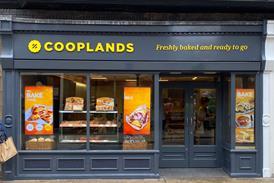
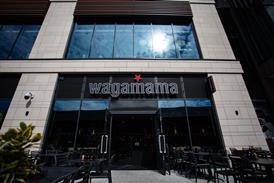


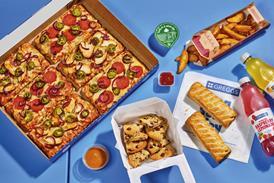
















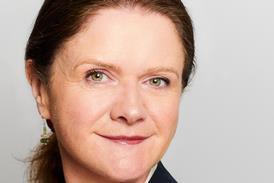






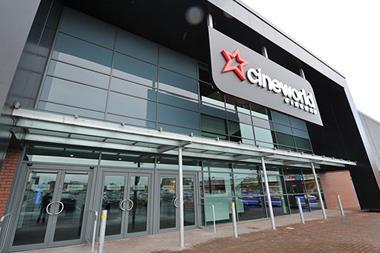



![Burger King Swindon_20_web[52]](https://d36hgjhwuw81py.cloudfront.net/Pictures/100x67/8/0/6/379806_burgerkingswindon_20_web52_81140.jpg)



